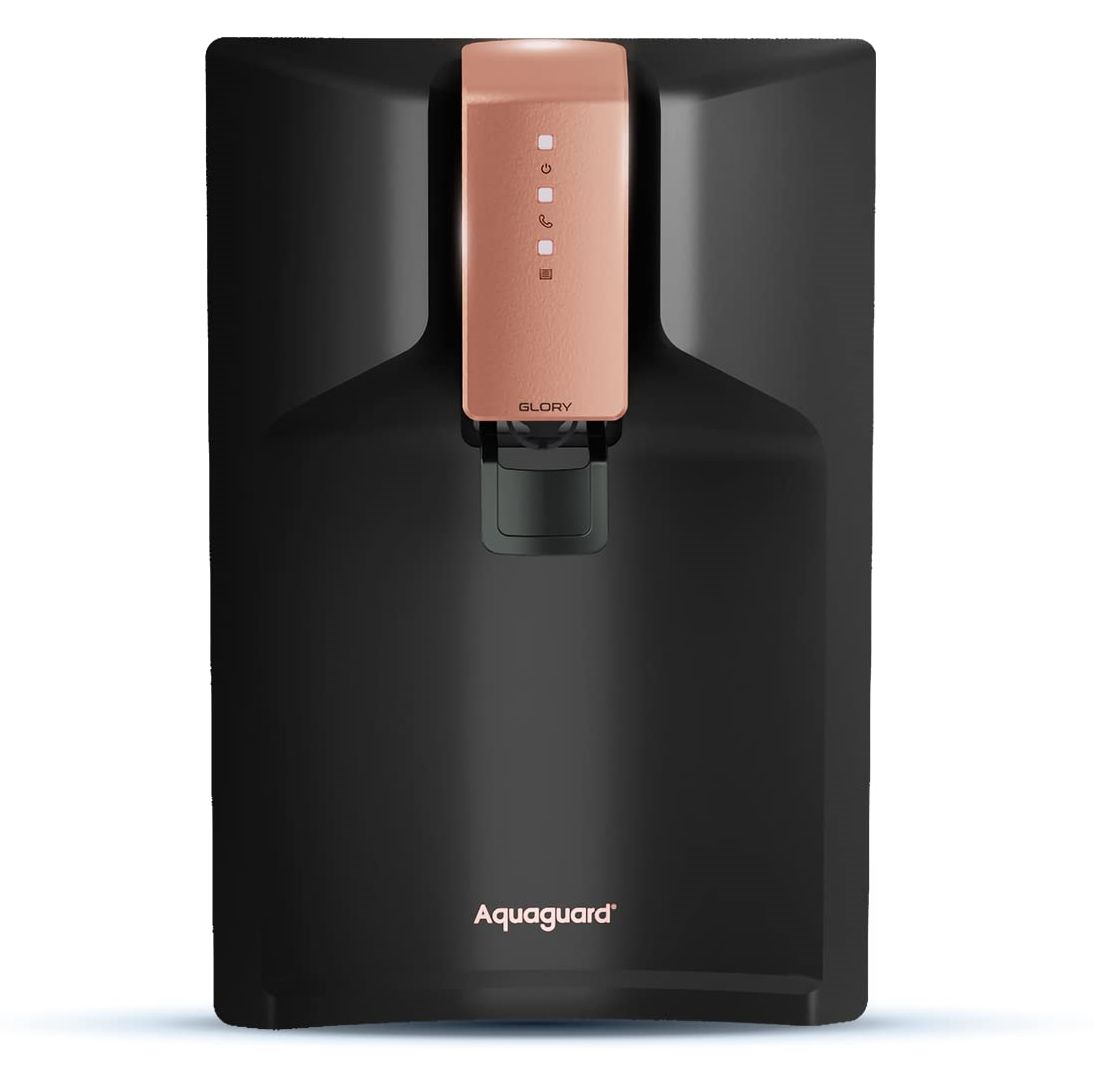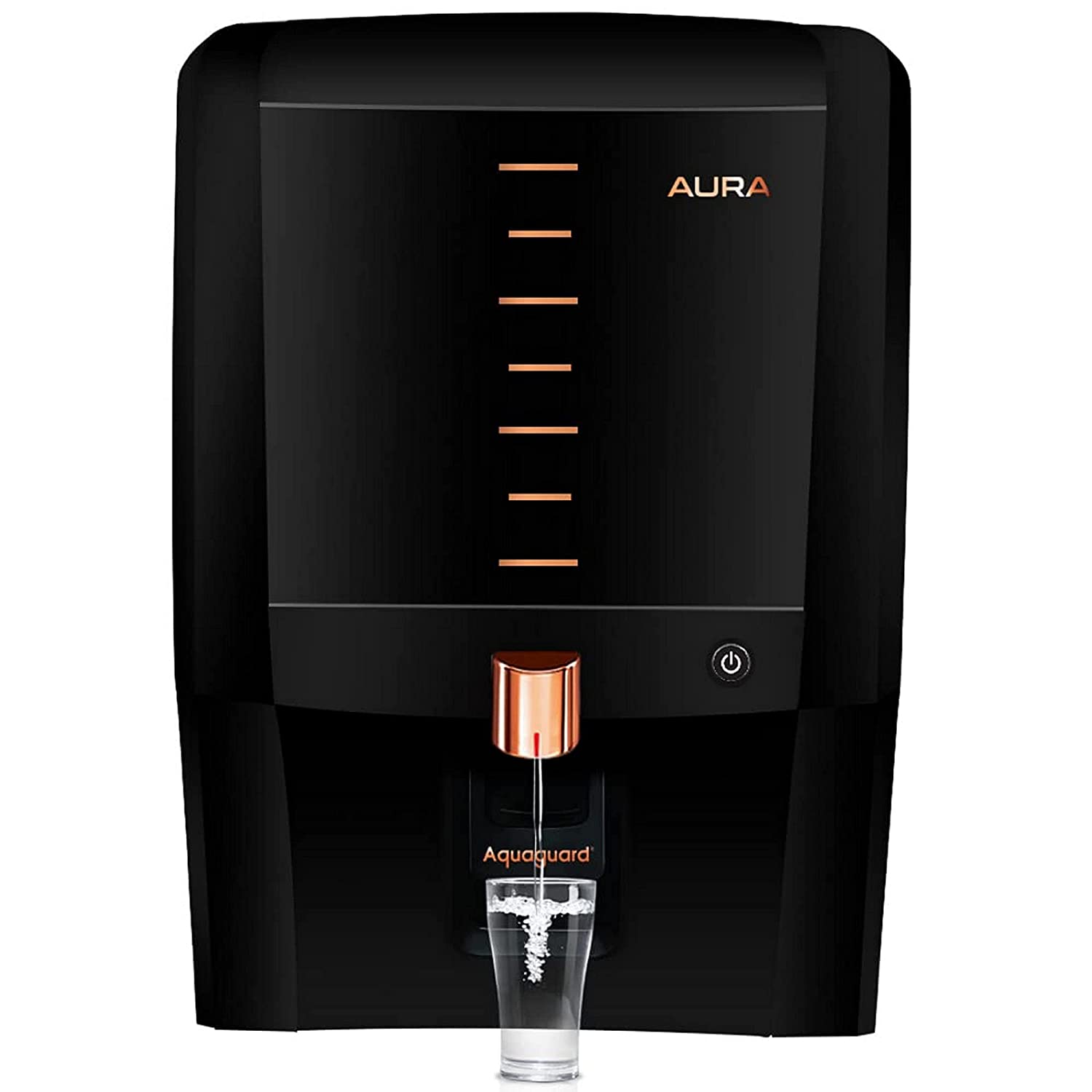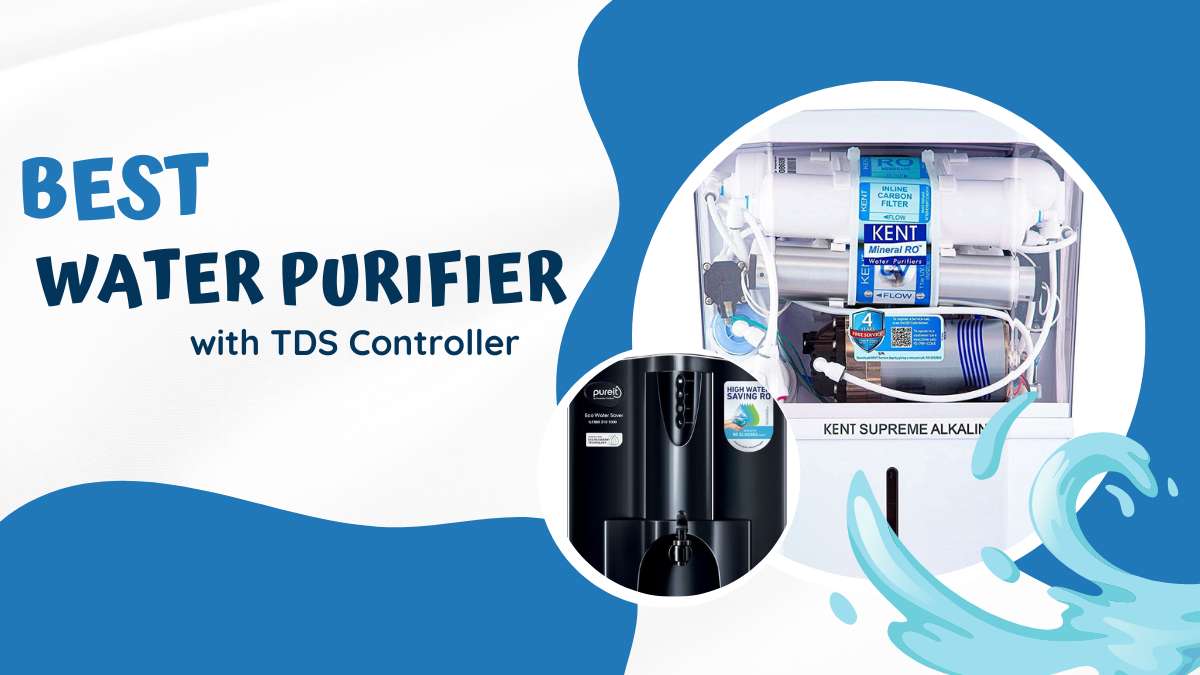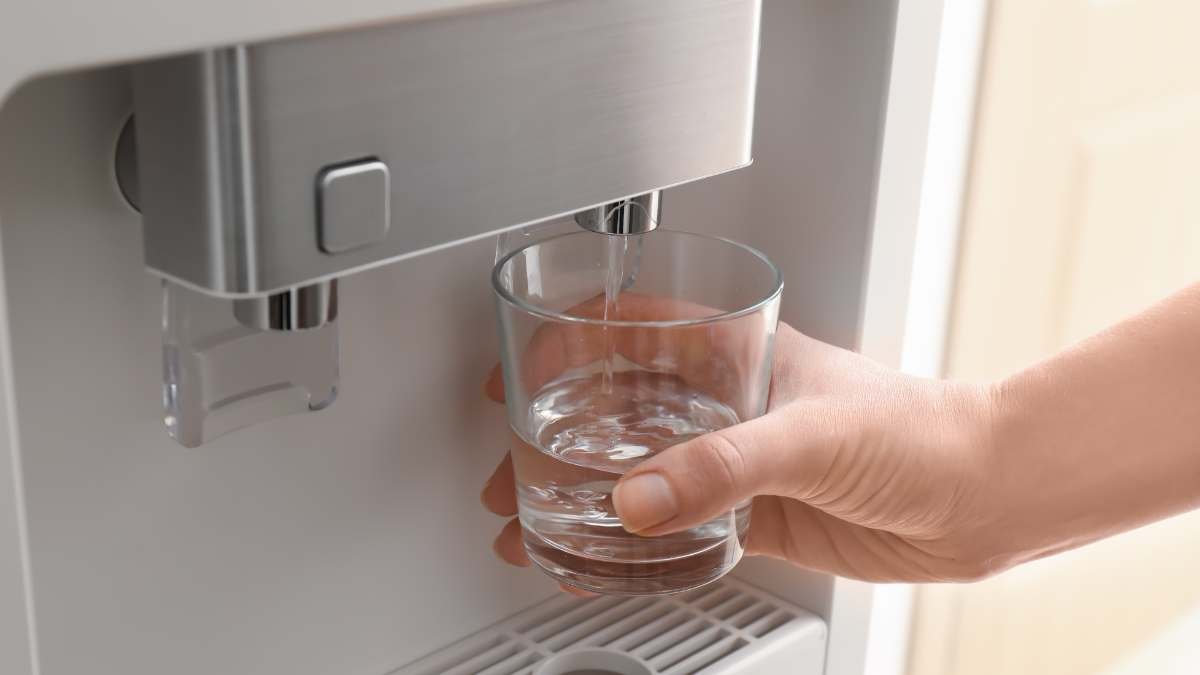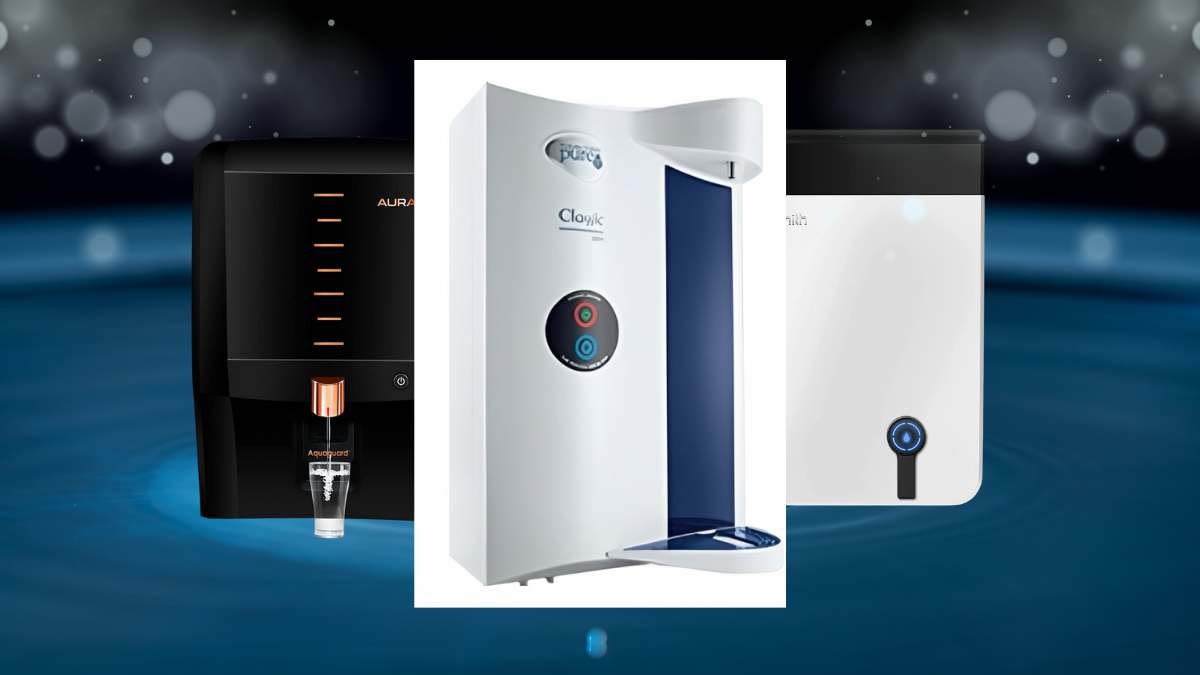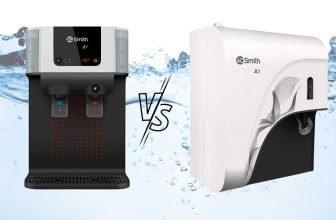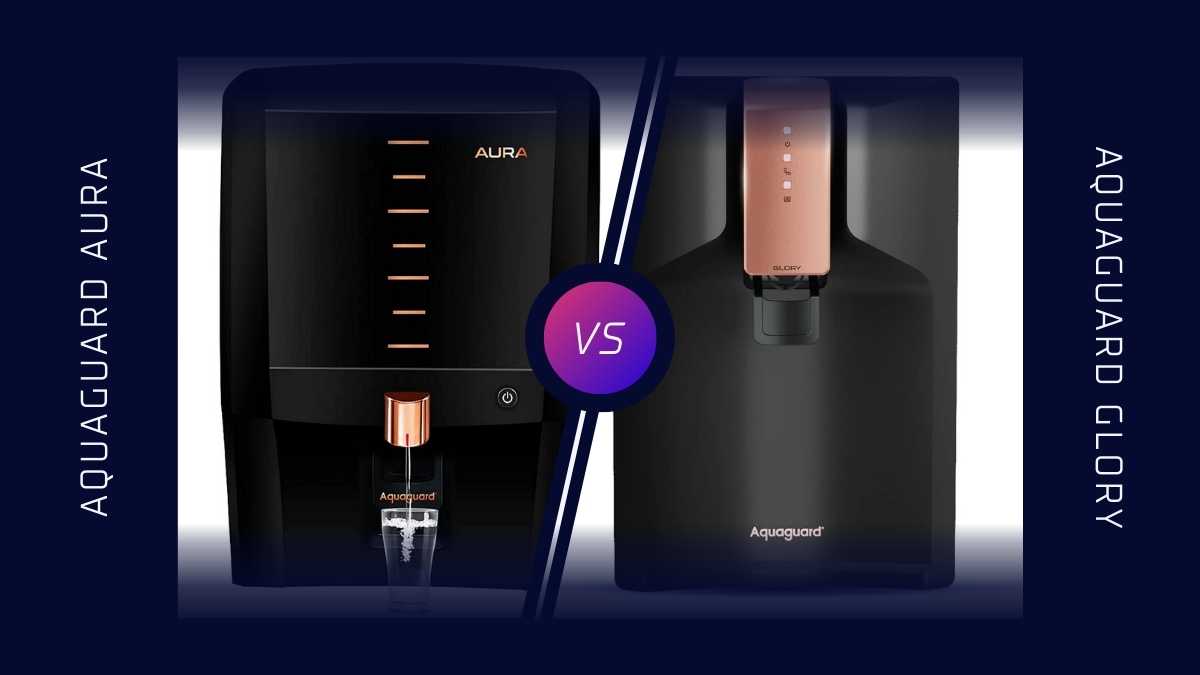
The main difference between the Aquaguard Aura and Aquaguard Glory water purifiers is their storage capacity, tank composition, and dependence on electricity. The Aquaguard Aura purifier has a higher storage capacity of 7 litres, whereas the Glory model has a 6 litre capacity. Regarding tank composition, the Aura’s transparent tank allows for easy water-level visibility. In contrast, the Glory’s tank, made from food-grade plastic, prioritizes hygienic storage without visible inspection.
Regarding electricity dependence, the Aura stands out with its ability to dispense purified stored water even in the absence of electricity, a feature lacking in the Glory model, which requires electricity for its touch-control dispensing mechanism.
Durability and design also mark significant differences between the two models. Aura’s water-pouring lever has been described as brittle and misaligned, which could pose problems in the long run, while Glory’s light plastic lever could break if not handled gently. Additionally, the Glory model has a potential issue with pest intrusion due to a space behind the tab, a problem not indicated in the Aura model.
Another important consideration is the water pressure requirement for the Glory model, which needs a specific range (0.5 to 2). A separate pressure pump purchase is necessary if the source does not meet this range. This requirement does not exist for the Aura model.
Here is the comparison table: Aquaguard Glory Vs Aura RO Water Purifier
A taste Adjuster (MTDS) ensures the water tastes good regardless of the source.
A large 7L Large storage capacity.
LED indicators for power, full tank, and service-due alerts.
Versatile installation options; can be wall-mounted or kept on the counter.
The AMC warranty only covers the RO membrane, not other filters.
The water pouring lever is brittle and may need to be properly aligned.
No separate storage box for water, which could lead to spills.
The TA feature adjusts the taste of water according to the source.
It comes with Mineral Guard feature.
Active copper technology infuses copper ions into the water.
A water tank made of food-grade plastic ensures safety and hygiene.
Space behind the tap may attract insects, even though they can’t enter the water tank.
Users with low or high water pressure may need to purchase a separate pressure pump, adding to the cost.
The delicate plastic lever used to dispense water could break if not handled gently
Comparison: Aquaguard Glory Vs Aura RO Water Purifier
Purification Technology and Capacity: Both the Aquaguard Aura and the Aquaguard Glory water purifiers use RO+UV+UF+TA purification technologies, ensuring the comprehensive removal of contaminants. The Aura has a slightly higher storage capacity of 7L compared to the Glory’s 6L, which might make the Aura a better choice for larger families or higher usage needs.
Taste Adjuster Feature: Both purifiers come with a Taste Adjuster (TA) feature, which adjusts the taste of the water depending on the source, ensuring sweet-tasting water.
Special Features: The Aquaguard Aura has an 8-stage purification process and an LED indicator for power on, a tank full, and service due, which the Glory model doesn’t have. Conversely, the Glory features a Mineral Guard to prevent the scaling of dissolved minerals like calcium and magnesium and an active copper technology that infuses copper ions into the water.
Material and Design: Aura’s water tank is transparent, allowing you to see the level of purified water easily. It can be wall-mounted or kept on a countertop, offering installation flexibility. The Glory’s water tank is made of food-grade plastic but lacks transparency.
Dispensing: The Aura has the advantage of being able to dispense water even without electricity, while the Glory requires electricity due to its touch control feature.
Active Copper and Zinc Technology: The Aquaguard Aura is equipped with Active Copper and Zinc, a unique feature that infuses water with copper and zinc. This can offer health benefits like boosting immunity and enhancing digestion. On the other hand, the Aquaguard Glory only mentions active copper technology, so it may not infuse water with zinc.
The durability of Components: Both the Aquaguard Aura and Glory seem to have issues with the durability of their water dispensing levers, with reports of them being brittle or delicate. This could be a concern for users who prioritize durability and long-term use.
Electricity Dependence: The Aquaguard Aura can dispense water even without electricity, which can be a significant advantage in areas where power cuts are frequent. The Aquaguard Glory, however, requires electricity to issue water due to its touch control feature, which could be a disadvantage in such areas.
Additional Purchase Requirement: For the Aquaguard Glory, if the water pressure is less than 0.5 or more than 2, a separate pressure pump costing around 1200 would be required. This could be an additional expense and hassle for some users.
Also read,

